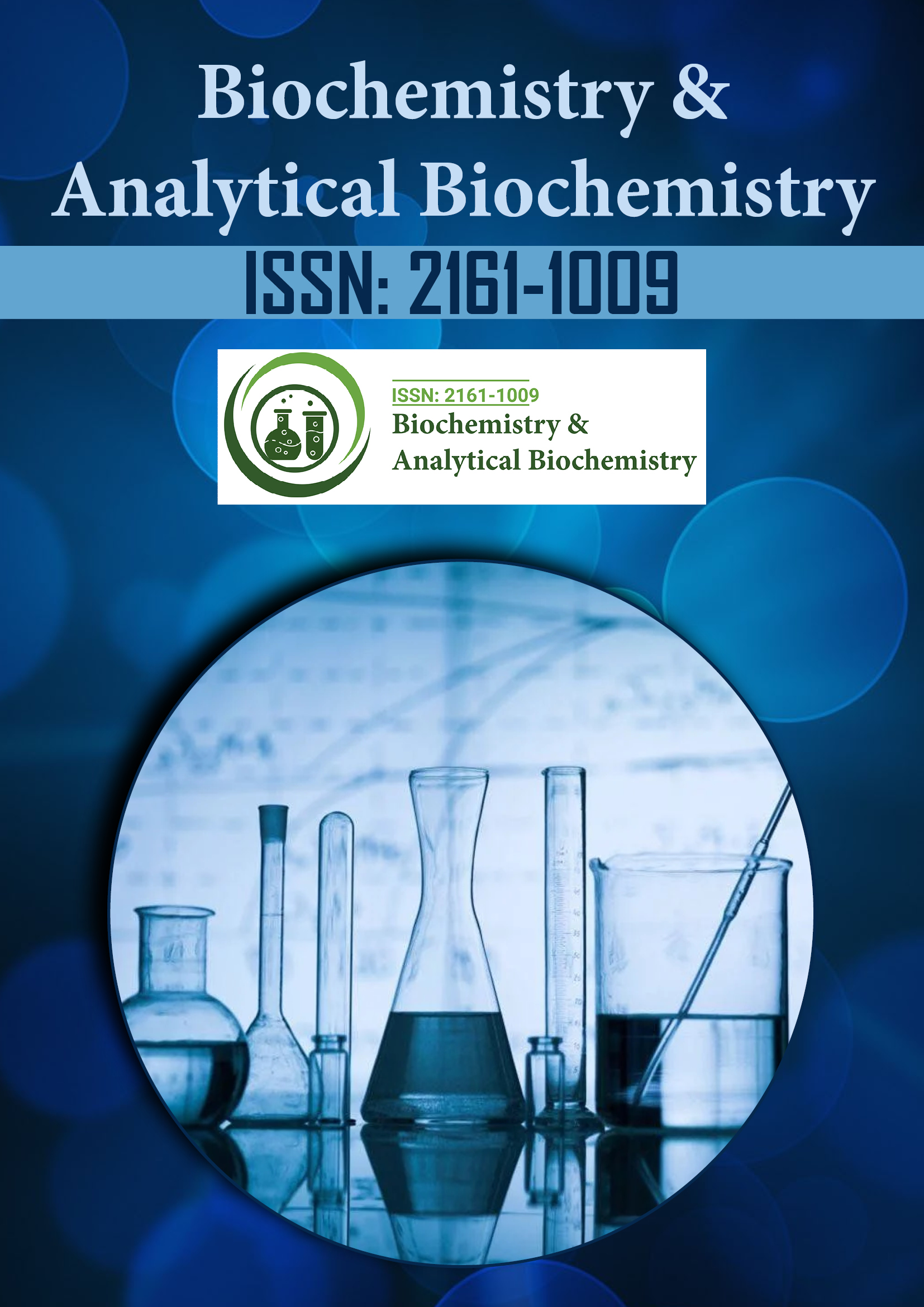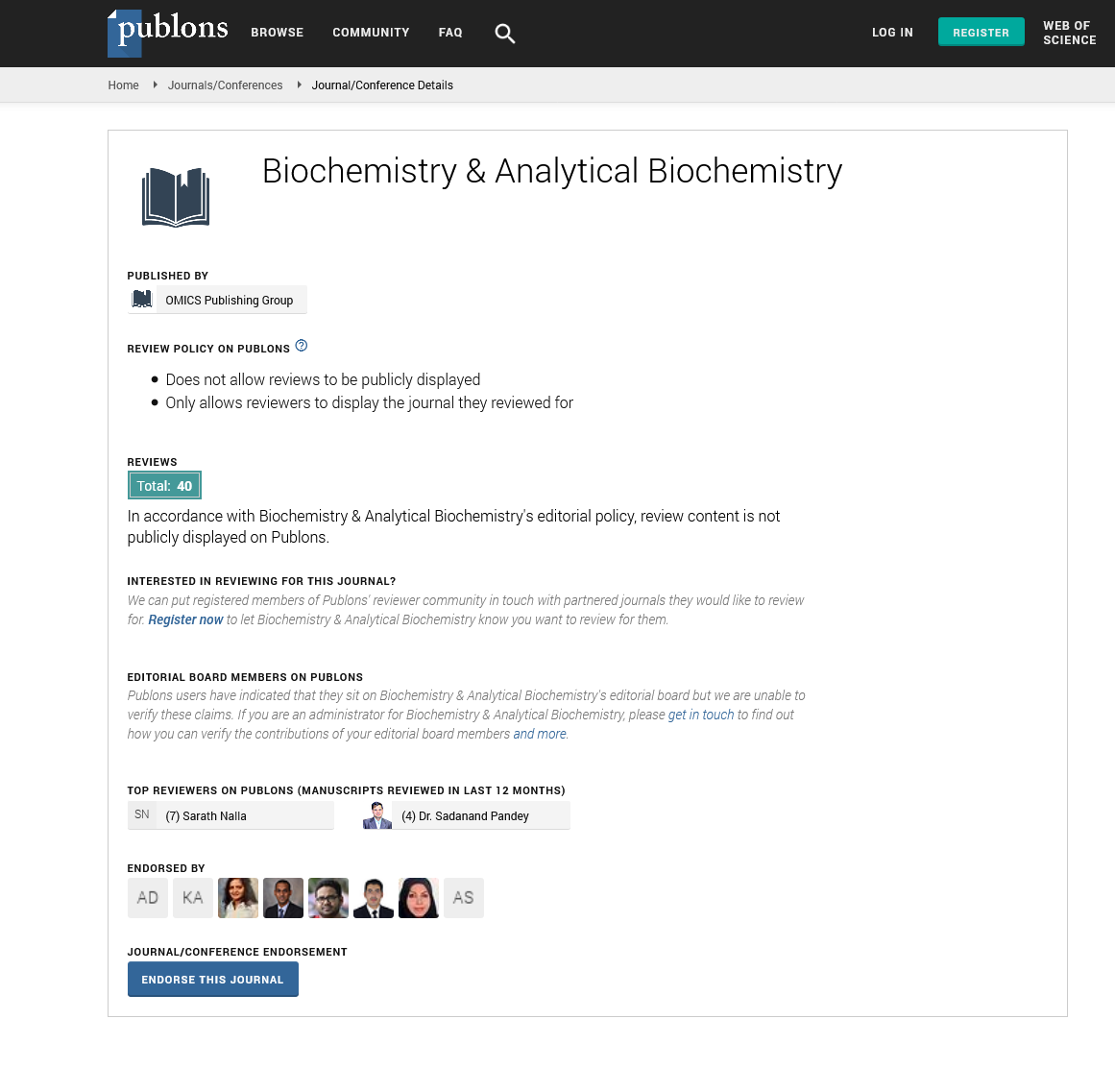Indexed In
- Open J Gate
- Genamics JournalSeek
- ResearchBible
- RefSeek
- Directory of Research Journal Indexing (DRJI)
- Hamdard University
- EBSCO A-Z
- OCLC- WorldCat
- Scholarsteer
- Publons
- MIAR
- Euro Pub
- Google Scholar
Useful Links
Share This Page
Journal Flyer

Open Access Journals
- Agri and Aquaculture
- Biochemistry
- Bioinformatics & Systems Biology
- Business & Management
- Chemistry
- Clinical Sciences
- Engineering
- Food & Nutrition
- General Science
- Genetics & Molecular Biology
- Immunology & Microbiology
- Medical Sciences
- Neuroscience & Psychology
- Nursing & Health Care
- Pharmaceutical Sciences
Perspective - (2024) Volume 13, Issue 4
Nanotechnology in Biochemical Analysis: From Sensing to Therapeutics
Hiroshi Tanaka*Received: 27-Nov-2024, Manuscript No. BABCR-24-28131; Editor assigned: 29-Nov-2024, Pre QC No. BABCR-24-28131 (PQ); Reviewed: 13-Dec-2024, QC No. BABCR-24-28131; Revised: 20-Dec-2024, Manuscript No. BABCR-24-28131 (R); Published: 27-Dec-2024, DOI: 10.35248/2161-1009.24.13.563
Description
Nanotechnology has emerged as a transformative field in biochemical analysis, offering novel approaches for sensing, diagnostics, and therapeutics. The unique properties of nanomaterialsm such as their small size, large surface area, and ability to interact with biological systems at the molecular level make them particularly suitable for a wide range of applications in the life sciences. By integrating nanotechnology into biochemical analysis, researchers have been able to enhance sensitivity, improve specificity, and develop new strategies for the detection and treatment of diseases. This has continued for innovative tools in diagnostics, drug delivery, and therapeutic interventions.
One of the key applications of nanotechnology in biochemical analysis is the development of highly sensitive sensors for detecting biomolecules. Traditional sensing techniques, such as Enzyme-Linked Immunosorbent Assays (ELISA) or PCR-based methods, rely on bulk reactions that often require large amounts of sample and extended analysis times. In contrast, nanosensors can provide real-time, ultra-sensitive detection with minimal sample input. Nanomaterials, such as gold nanoparticles, quantum dots, carbon nanotubes, and graphene, are frequently used as platforms for biosensors due to their excellent optical, electrical, and chemical properties. These nanoparticles can be functionalized with specific biomolecules, such as antibodies or nucleic acids, to selectively bind target analytes. The interaction between the analyte and the nanoparticle can lead to measurable changes in optical properties fluorescence, or electrical signals, allowing for highly sensitive and rapid detection of biomarkers associated with diseases such as cancer, infectious diseases and neurological disorders.
For instance, gold nanoparticles have been extensively utilized in the development of colorimetric assays, where the aggregation or dispersion of nanoparticles in response to a specific biomolecule results in a detectable color change. This method can be used for point-of-care diagnostics, providing quick and cost-effective detection of disease biomarkers. Similarly, quantum dots, with their unique fluorescence properties, have been used for multiplexed detection, where different quantum dots emitting at distinct wavelengths are used to simultaneously detect multiple analytes in a single sample. The ability to detect multiple biomarkers at once enhances the diagnostic potential of these nanomaterial-based sensors and allows for more comprehensive disease profiling.
Carbon nanotubes and graphene-based materials have also gained attention as nanomaterial platforms for biosensors. These materials have exceptional electrical conductivity and can be used in electrochemical sensing, where the binding of a biomolecule to the surface of the nanotube or graphene alters the electrical properties of the sensor. This type of biosensor is highly sensitive and can detect low-abundance biomolecules with high specificity, making it ideal for early detection of diseases or monitoring disease progression. Additionally, carbon nanotubes and graphene have been used in the development of electrochemical sensors for the detection of neurotransmitters, which are important for studying neurological disorders.
Nanotechnology has also revolutionized the field of drug delivery by providing new ways to target specific cells or tissues, improve the solubility of drugs and control the release of therapeutic agents. Traditional drug delivery systems often face challenges related to poor bioavailability, non-specific distribution, and side effects. Nanoparticles, however, can be engineered to overcome these limitations. For example, liposomes, dendrimers, and polymeric nanoparticles can encapsulate drugs and protect them from degradation, while also enhancing their solubility and stability. These nanoparticles can be functionalized with targeting ligands, such as antibodies or peptides, to specifically bind to receptors on the surface of diseased cells, allowing for targeted delivery of therapeutic agents to the site of action. This approach minimizes off-target effects and enhances the efficacy of treatments, particularly for conditions like cancer, where targeted therapy can improve patient outcomes.
One of the most key applications of nanotechnology in therapeutics is the development of nanoparticles for the delivery of nucleic acids, such as siRNA, mRNA, or DNA. These genetic materials hold immense potential for treating genetic diseases, cancers, and viral infections by modulating gene expression. However, delivering nucleic acids into cells has been a major challenge due to issues such as instability in the bloodstream and difficulty crossing cell membranes.
Citation: Tanaka H (2024). Nanotechnology in Biochemical Analysis: Advancing Diagnostics, Drug Delivery and Therapeutic Interventions. Biochem Anal Biochem. 13:563.
Copyright: © 2024 Tanaka H. This is an open access article distributed under the terms of the Creative Commons Attribution License, which permits unrestricted use, distribution, and reproduction in any medium, provided the original author and source are credited.

